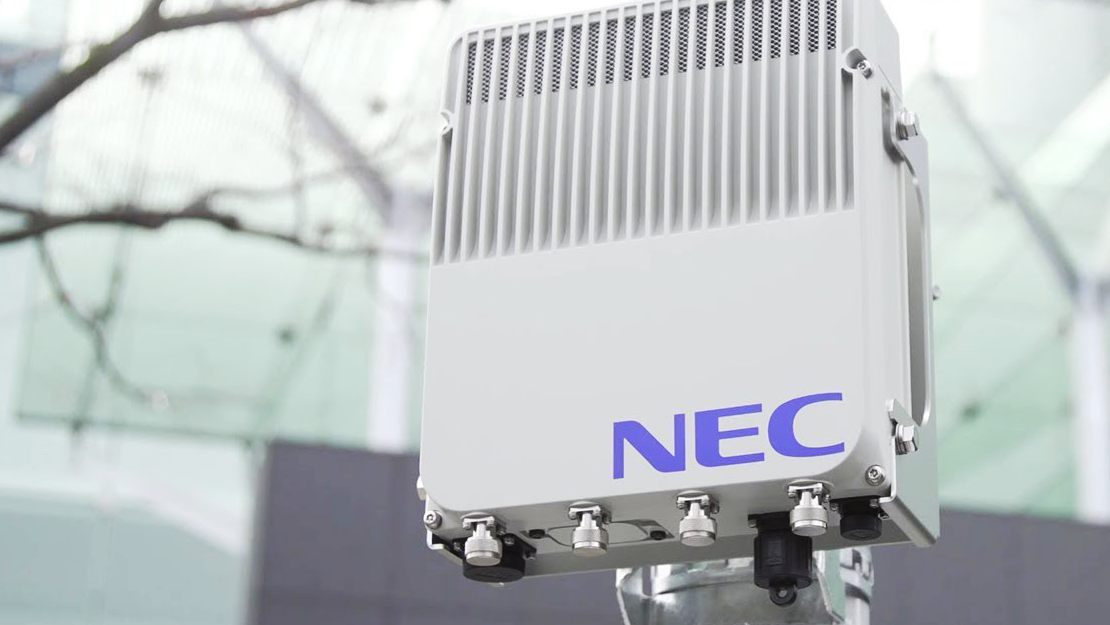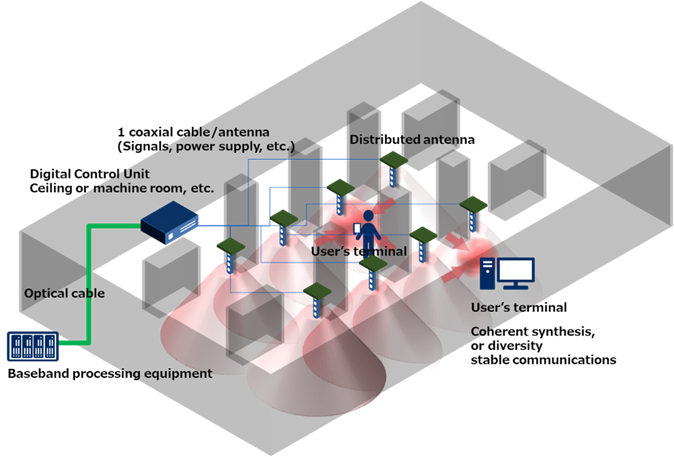MIMO and Massive MIMO explained
Discover how MIMO antennas sit at the heart of mobile networks, and why Massive MIMO will be vital in 5G's growth.

MIMO stands for ‘Multiple Input, Multiple Output’, and is a form of radio antenna that increases efficiency by increasing the number of transmitters and receivers. Perhaps more importantly, MIMO antennas can send and receive signals over the same channel, without the need to take turns, which increases capacity without sacrificing spectrum.
In today’s 4G and 5G networks, base station antennas are typically fitted with around 12 antenna ports that broadcast information in every direction at once. Which means that current transceivers have to take turns if they want to transmit and receive data on the same frequency, or the data has to be moved to another frequency to avoid hold-ups, and this causes congestion. The solution is Massive MIMO.
Massive MIMO antennas and stations
Massive MIMO (or mMIMO) antennas and stations take this a step further. They can support in the region of 100 ports, which vastly boosts the capacity of the network. Huawei, ZTE, and Facebook’s Massive MIMO systems have successfully tested up to 128 antennas, although commercial models, such as Ericsson’s AIR 6468, average at around 64 transmitters and 64 receiver antennas.
This significant boost doesn’t come without its challenges, though, and an increase in ports makes the current multi-direction broadcasting used in 4G cell sites unfeasible. There would be too many signals crossing each other which would cause serious interference and negate any of the benefits seen by the increase in capacity. This is where beamforming comes in.
Beamforming and MIMO
Instead of broadcasting signals in every direction at once, beamforming allows a base station to send a focused stream of data to a specific user or device.
As multiple signals are sent and received via the MIMO antennas, beamforming technology uses advanced signal processing algorithms to determine the best “path” for the radio signal to take to reach the user.
This includes bouncing packets of data off walls to avoid the signals interacting with each other, thus reducing interference and creating more efficient connections.
Get up to speed with 5G, and discover the latest deals, news, and insight!
Beamforming is clever technology because it can adapt to the environment you're in and ensure you get the best signal possible.
Improved indoor coverage with MIMO
NEC has successfully demonstrated mmWave 5G in an office environment, using distributed-MIMO, which has enabled them to triple the number of simultaneous connections and capacity in an office environment, using distributed-MIMO in the 28 GHz millimeter-wave frequency band.
“NEC has established itself as a leader in digital beamforming technology and has commercialized Massive MIMO in the sub 6 frequency band,” NEC said. “Moreover, NEC has developed digital coordination technology among antenna elements distributed in the millimeter-wave frequency band and conducted verification activities to solve the problems of indoor mobile communications, such as shadowing and diffraction of propagation paths.”

The demo achieved approximately three times the number of simultaneous connections and transmission capacity, compared to test cases without distributed-MIMO in the 28 GHz frequency band.
This was the first demonstration in the industry to apply a distributed-MIMO system in the millimeter-wave frequency band in an office environment, with NEC hoping that it will contribute to the construction of 5G environments that enable simultaneous multiple connections in the future.
“Applying Massive MIMO techniques to millimeter-wave frequency is considered to be optimal for applications where each terminal requires a high transmission capacity, such as indoor offices or stadium seats with high terminal density,” the announcement explained.
NEC conducted propagation and transmission trials in a real office environment, using a distributed-MIMO technique for the Radio Units (RU) of a 28 GHz band base station system, which boosted simultaneous connections and increased capacity.
Will MIMO power consumption be a problem
As the need for more hardware, with even more antennas, becomes clear, there have been a number of concerns raised about sustainability, and the power consumption that MIMO technology will require.
However, at the beginning of 2021 Nokia announced that its AirScale 5G mMIMO base station, one of the leading products used in 5G infrastructure around the world, will achieve an average power consumption reduction of 50 percent by 2023.
"Using less energy during use and manufacture. Everything from our chipsets to our software and hardware is geared towards supporting this."
Ari Kynäslahti, Nokia.
“Nokia is committed to contributing to solving the world’s sustainability challenges and we do that by ensuring our technology is designed to be as energy efficient as possible,” said Ari Kynäslahti, head of technology and strategy at Nokia Mobile Networks. “This means using less energy during use and manufacture. Everything from our chipsets to our software and hardware is geared towards supporting this goal.”
According to Nokia, a customer field tests found that the power consumption for Nokia’s 5G mMIMO BTS site was more than 10% lower than that of its nearest competitor, with the company now pledging to further lower the consumption of 5G mMIMO base stations by approximately 50 percent.
Nokia, and other companies manufacturing massive MIMO technology will be able to achieve improved power consumption by using technologies such as AI and advanced sleep mode features, which will help to optimize the energy usage of base stations.
And despite growing concerns around the energy consumption of 5G, with the requirement for extra infrastructure and 5G small cells, 5G is actually far greener than its predecessor, with more data bits per kilowatt of energy than any previous wireless technology generation. But with consumers on 5G already consuming nearly three times more data than people using 4G, it’s critical that the energy consumed does not rise at the same rate.
- Get your hands on the hottest 5G phones
- The complete guide to 5G security
- Discover the truth behind 5G dangers
- 5G towers: everything you need to know
Dan is a British journalist with 20 years of experience in the design and tech sectors, producing content for the likes of Microsoft, Adobe, Dell and The Sunday Times. In 2012 he helped launch the world's number one design blog, Creative Bloq. Dan is now editor-in-chief at 5Gradar, where he oversees news, insight and reviews, providing an invaluable resource for anyone looking to stay up-to-date with the key issues facing 5G.

